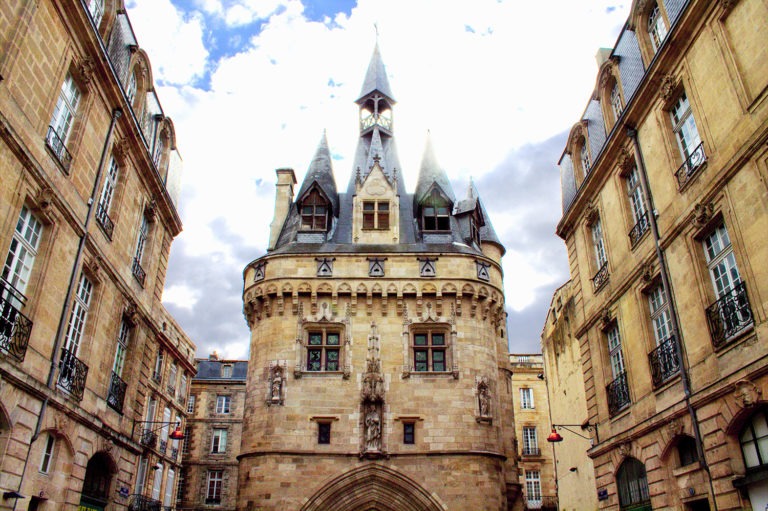Why you absolutely must visit Annecy, France
You’ve seen Paris, you’ve seen Normandy, you’ve seen Alsace. You’re so over vineyards, and you can’t stand the heat and snobby attitude of the Riviera. What’s a girl to do? Visit Annecy, is what you do, actually.
Indeed, if you are looking for the perfect provincial getaway for your next vacation in France (we can never stay away for very long, can we?), Annecy might be just the perfect place to go if you want to see another side of France.
I’ve wholeheartedly fallen in love with this idyllic village, having visited six times over the course of two years, coming up with excuses to drive there whenever possible (it’s such a beautiful sunny day; wouldn’t cheese fondue be good for dinner?; my dad is coming over for a visit; it’s a long weekend; etc.)—but what about Annecy could’ve possibly made this wanderlust-driven travel expert fall so hard?
Find out for yourself!
Because it’s got amazing architecture.

As you can evidently see from these photos, Annecy is a dream come true for architecture buffs like me. Often dubbed “the Venice of the Alps” because of the Thiou Canal and its earth-toned buildings, Annecy is indeed a very photogenic place that only gets increasingly better as you spend more time there.
Because it’s in a perfect location.

Haute-Savoie is an ideal base to explore the surrounding area, which is full of possibilities. Starting with the culinary gem that is Lyon to the dreamy Beaujolais wineries, it’s also possible to get to Lake Geneva in less than half an hour or to the highest peak in the Alps in just over two.
If you wish to stay closer to Annecy, fret not; there are several interesting things to do in the area, too!
Because its lake is one of the prettiest, largest and oldest lakes of France.


As if the “cleanest water of Europe” wasn’t good enough of a sales pitch to begin with, Lake Annecy is a veritable feast for the eyes. Surrounded by the dramatic heights of Massif des Bauges Natural Park, it will appeal to both leisurely travellers with its pristine beaches and to adventure-seeking watersports enthusiasts with ample swimming, speed boating, sailing, water-skiing and even diving possibilities.
Lovebirds (and trust me, there are many in these parts) should not hesitate to indulge in romantic candlelit dinner cruises and hand-in-hand strolls along Pont des Amours in the verdant Champ-de-Mars. The lake itself is the third largest in France at 27 square kilometres and is well known for its vivid turquoise hue; it’s estimated to be 18,000 years old, having been formed at the time colossal alpine glaciers started receding during the last ice age.
Because Annecy fondue is mouth-watering.

Perhaps the best reason for visiting Annecy is the local cuisine. I’m always up for a foodie odyssey but rarely have I had this mouth-watering of a love affair. You see, Haute-Savoie is home to several of France’s most iconic cheeses, including smelly but flavourful Reblochon, Tome, comté, and Beaufort, to name a few, which all mix exquisitely to create an impossibly appealing fondue savoyarde—just writing about this drives my taste buds straight into overdrive.
I must admit that I was not strong enough to be discouraged by a 3-hour drive (from Clermont-Ferrand, where I used to live when I was an expat in France) just to get an authentic fondue. I just don’t have that much willpower.
Because it’s got history.

The construction of the castle for the Count of Geneva in the Middle Ages triggered a sort of Renaissance for the town that had, until that point, essentially stuck to its Roman heritage; with this newfound wealth came new privileges and new buildings (including the attraction that is now Palais de l’Isle) and Annecy expanded as rapidly as the labour force would allow.
This prosperity, nourished by the town’s strategic location along the trading route between Geneva and Italy, grew steadily until the late 14th century when Annecy was absorbed by the state of Savoie, which caused an equally sharp and sudden decline in religious fervour and, therefore, in the economy. Most of the town burned to the ground —not once, but twice— and it wasn’t until Annecy became a notorious hotbed for the counter-Reformation movement (despite the fact that it also was the seat of the diocese of Geneva; yeah, it’s complicated) that it regained its momentum, as several new constructions were ordered by François de Sales. He was consecrated Bishop of Geneva in 1602 and his presence in Annecy helped strengthen the spiritual and intellectual prestige of the town, which was home to over thirteen religious orders of various faiths.
Fast forward to the agitated 18th century, where Annecy, although still part of the independent Duchy of Savoy, was invaded by the French troops of General Montesquiou during the infamous French Revolution and essentially became a French department overnight. It did change hands a few times after that, but it quickly went back to France, where it truly belonged. And the rest, as they say, is history.
Because it has a village feel despite its actual size.




Calling Annecy a village would be an unforgivable mistake, for it is home to over 50,000 inhabitants and to several thriving industries, in addition to tourism. In fact, the Annecy I’m referring to is solely the old and historic part of town, a wonderfully preserved medieval village in which I love to wander aimlessly.
This may be France, but it definitely is not Paris; locals are friendly, chatty, and always happy to help suggest a place to eat or a hike in the mountains nearby. Precisely why I love Annecy so freakin’ much ♥







